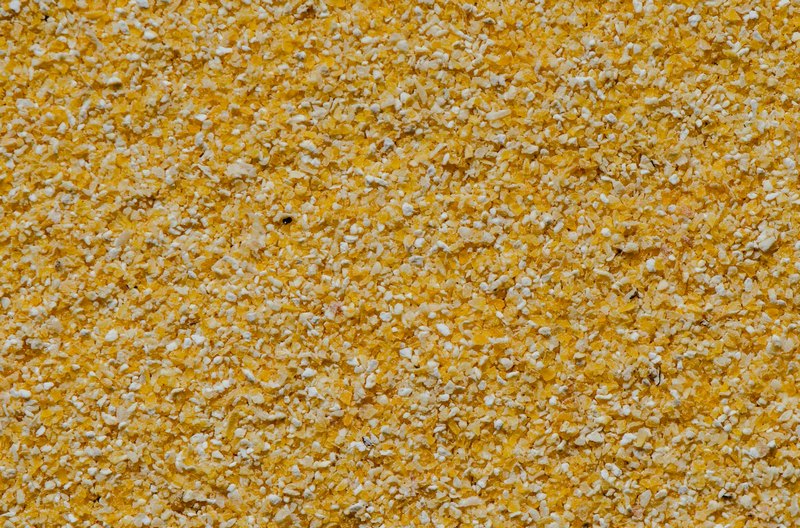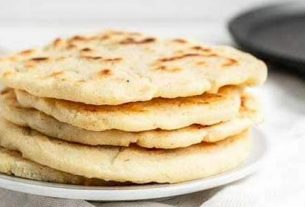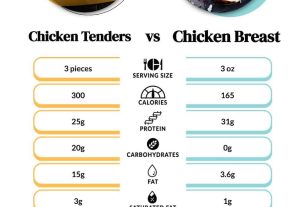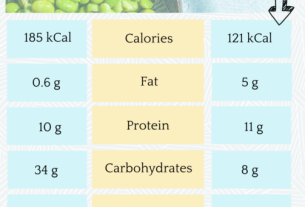Cornmeal is usually used to make polenta but you cannot use all cornmeal to make polenta. Polenta is a golden creamy dish and you must get to know the best cornmeal you can use that will result in the best outcome.
You need to understand that there are sets of best cornmeal that can be used to make polenta and because cornmeal is quite versatile and you can use it in different recipes ranging from breakfast and then to dinner with a savory or sweet taste. The best type of cornmeal you can use for your polenta is coarse ground and de-germinated cornmeal that help to prevent graininess.
What we will find out in this guide is to check out the factors needed to be considered that will help you to create your perfect dish as well as the best sets of cornmeal that is good for making polenta and how you can make the polenta consistently.
The Difference Between Polenta and Cornmeal
You can classify cornmeal as ground corn of any style or size of grind while polenta can be classified to be a dish that is made with a specific type of cornmeal. When you see a cornmeal package carrying the label “polenta,” it means that the particular cornmeal is suitable enough for cooking your polenta. However, you can use cornmeal to cook everything including muffins, porridge, and any other delicious dishes.
Grits vs Polenta
Polenta can be considered to be a very simple dish and a staple of Italian origin that you can use to complement any main or side dish. In the United States, it is much more popular to eat corn grits most especially for southern cooking. They are, however very similar when you consider consistency. Depending on different manufacturers, grits are labeled to be used as polenta.
Polenta is traditionally made with yellow ground corn but grits are commonly more made using white corn; blue corn can also be used to make it. The major difference between polenta and grits is in their textures where grits have been found to be a much finer, creamier grain. You can as well make yourself polenta from a coarse white corn grain though you will not find it completely authentic in case the audience you will be serving are discerning Italians.
Types of Cornmeal
You have to know how you can rightly choose the correct cornmeal for your polenta, try to read some of our points below:
Grind
The most popular factor that helps to distinguish between different kinds of cornmeal is the grind. There are three major choices:
- Coarse: This is the preferred type of cornmeal grind that can be used to cook polenta. It will usually have a larger piece of corn helping to add volume and mass to the recipes.
- Regular: This is most popular in grits or white cornmeal and it can also be used to frequently bake or to make hot cereals such as porridge.
- Fine: This is a very minute corn grain that is usually used in coating and batters. You cannot generally use fine cornmeal to make polenta except you are trying to make a quick meal which will bear something that resembles a traditional dish.
You will usually find commercial ground that will not be identified and it is simply a basic form of grain or the stoneground. You will get an excellent irregularity degree in the grain size when you consider stone grinding corn and it will have less consistency and more texture. Personality will be added to the dish but it could dramatically change its texture each of the time that you cook the polenta and it is dependent on if you will end up with larger chunks or more powdery ones.
Grain
Just like several whole grains, you can consider corn to have a hull and a germ. Forms of whole-grain cornmeal can grind them together to create tougher cornmeal. Cooking it will usually take a long time and also be stronger to chew but it will have more nutrition, most especially the fiber.
However, de-germinated cornmeal whose germ has been removed but has its hull can be found and it will usually create something of a smoother outcome and will typically cook a bit quicker. For a creamy, nice polenta, de-germinated cornmeal will work perfectly fine though it is not all the packages that state the exact way.
Cooking Style
Just like oatmeal, it is possible to get traditional cornmeal or instant or quick cornmeal that will refer to the time that you need to get it cooked. Corn is usually a hearty, hard grain and it could take a bit of time before it gets cooked in the traditional like polenta.
Whenever you are in rush, manufacturers have helped to make things easier by helping to diligently process your corn and making it an instant or quick version that will not use up to half of that time. You will get the same flavor but the final consistency will be a bit different.

The Best Cornmeal For Polenta
The first thing you need to know is that if you have a particular recipe you are following, select the kind of cornmeal the recipe needs because the ratios and cooking times may slightly differ.
-
Shelton Farms Stone Ground Grits
This brand believes it has been eaten by chefs and local politicians and that means it has some quality assurance.
Key features:
- Yellow corn, coarsely ground and perfect to be used for polenta.
- It is non-GMO. It is usually grown in the United States
-
PAPA’S White Corn Grits
This brand will offer you an awesome price with bulk supply even though using white corn grits will not result in authentic polenta. You will still find it delicious and will have an ideal grind. You will have an excellent mashup between grits and polenta.
Key features:
- White corn usually produces softer, lighter results and this will give a very smooth polenta.
- Thought it is stated on the package that they are quick, but the grind is quite coarse to take up to 30 minutes before your creamy polenta can be cooked.
- This brand has been certified to be Kosher and it is a designation for home cooks and Jewish readers.
-
Bob’s Red Mill Organic Corn Grits / Polenta
This brand has organic and regular grains and they usually help in both quantity and quality.
Key features:
- It has been grounded specifically to be used in polenta and contained in the package are the ideas of how you can use it as corn grits, porridge with an explanation of different means of cooking.
- Very high quality of organic yellow corn.
Cornmeal Drawbacks
When you are considering commercial manufacturers, drawbacks on a food item like cornmeal are not really available. Some people will also complain and it is worth mentioning that majority complain that it is not the traditional American grits style. Both of the recipes are very similar but they are different even though both of them can be made by using the same cornmeal and the outcome will slightly vary.
Easy Polenta Recipe
It is a bit time-consuming to make polenta but it can be easily made once your cornmeal is well-known by you. You can try it out and all you will need to have are the few ingredients and exercise patience.
Ingredients:
- Five cups of your water
- One cup of your coarse cornmeal
Directions:
- Allow the water to boil
- Gradually and slowly add the cornmeal into the water whisking it to help prevent clumps.
- Allow it to cook for a period between 20 and 40 minutes, constantly whisking it.
Polenta is usually cooked using the taste and that means you need to test it as you proceed to cook it up until it gets to the consistency that is perfect for your choice. You can then serve your meal inside a warmed pan so that it will not get cold too fast.
Optional Ingredients:
You may add some additional flavorings once the polenta has been cooked to give you a delicious and unique dish. Check below for some of those things you can add to homemade polentas:
- Berries and nuts and fresh fruit
- Chopped parmesan and prosciutto
- Basil and Tomato
- Pine nuts
- Dairy or substitute for dairy for the creaminess
- Cheese
- Herbs and Garlic
- Butter
Related Questions
Can I grind polenta to make cornmeal?
Once you have cooked polenta, you cannot grind it to become cornmeal. On the other hand, if what you have is a cornmeal package that has the label polenta and this means that the cornmeal grind is usually ideal in making polenta. For finer grains, add dry polenta cornmeal to your blender or food processor to help chop into several smaller pieces that will make lighter and softer cornmeal.
What can I use as a substitute for polenta?
We usually use polenta as supplements to meat and vegetables or as side dishes. You can substitute polenta for delicate risotto, grits, and cauliflower or creamy mashed potatoes.
Is there a difference between cornmeal and cornflour?
Cornmeal is considered to be a larger grain of corn kernel and you will get corn flour which is a fine powder that you get from further grind cornmeal.


